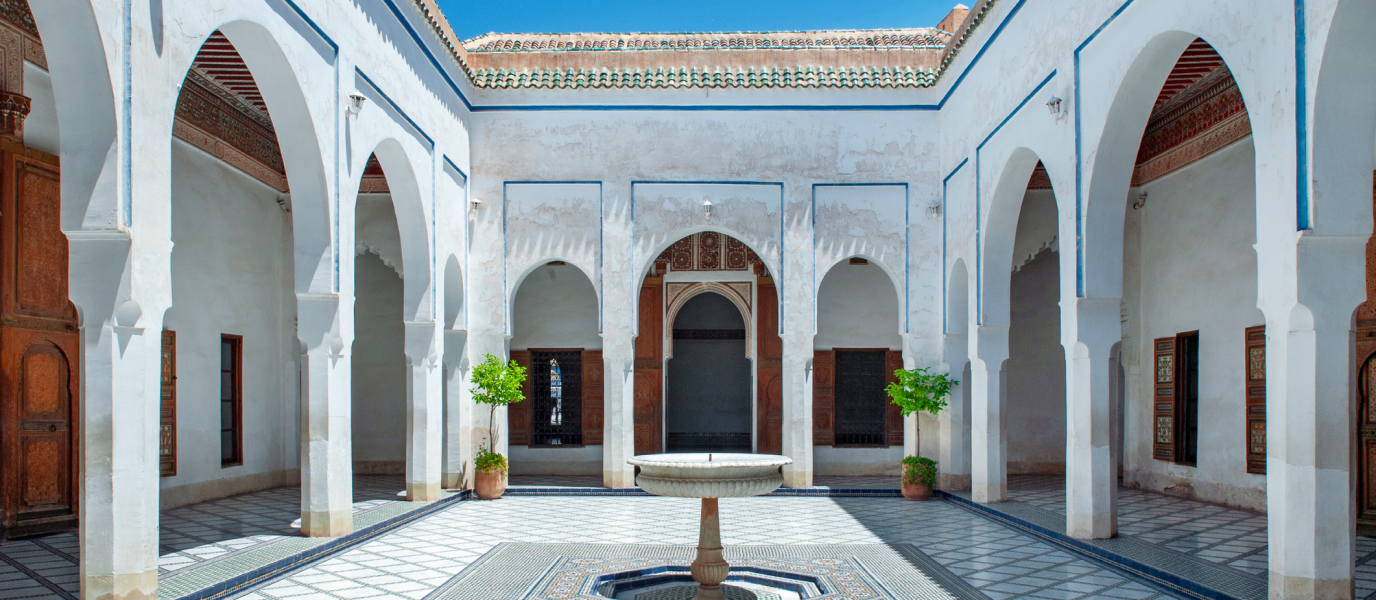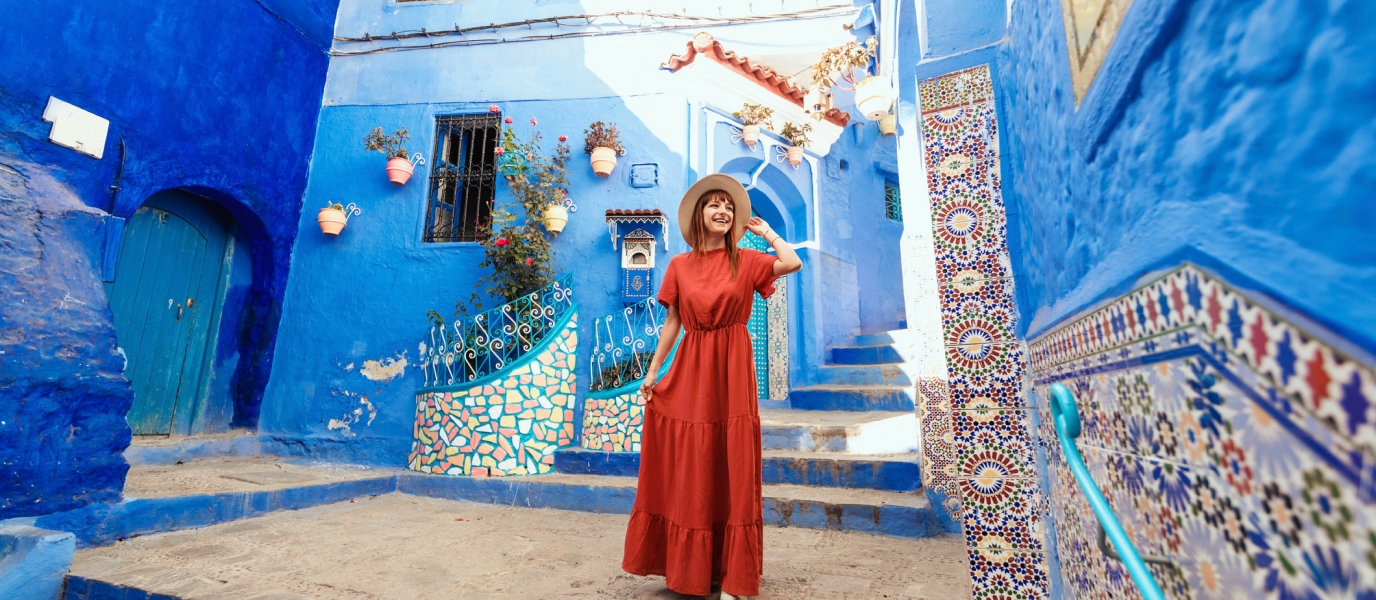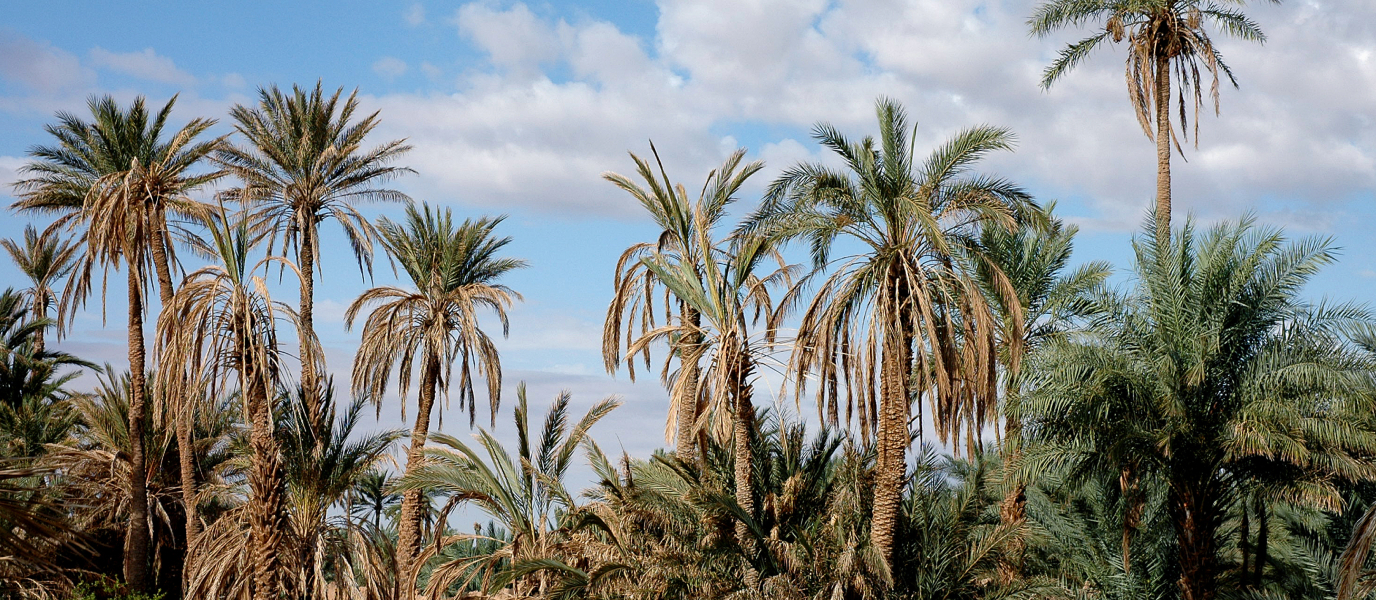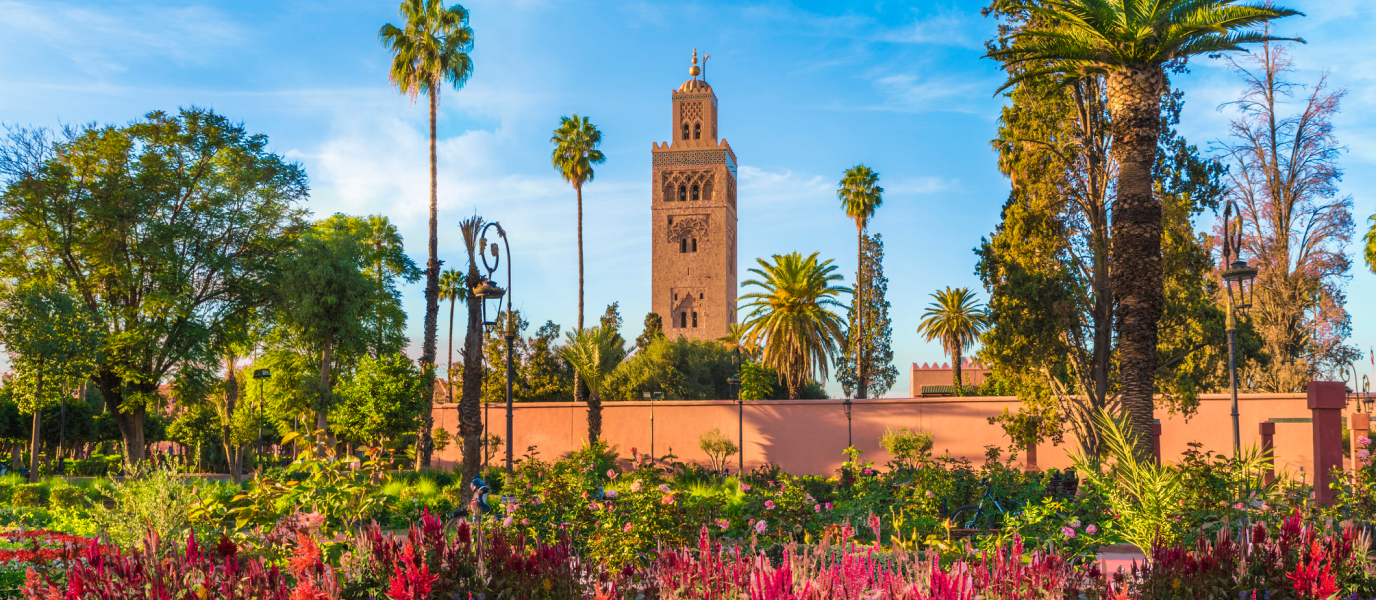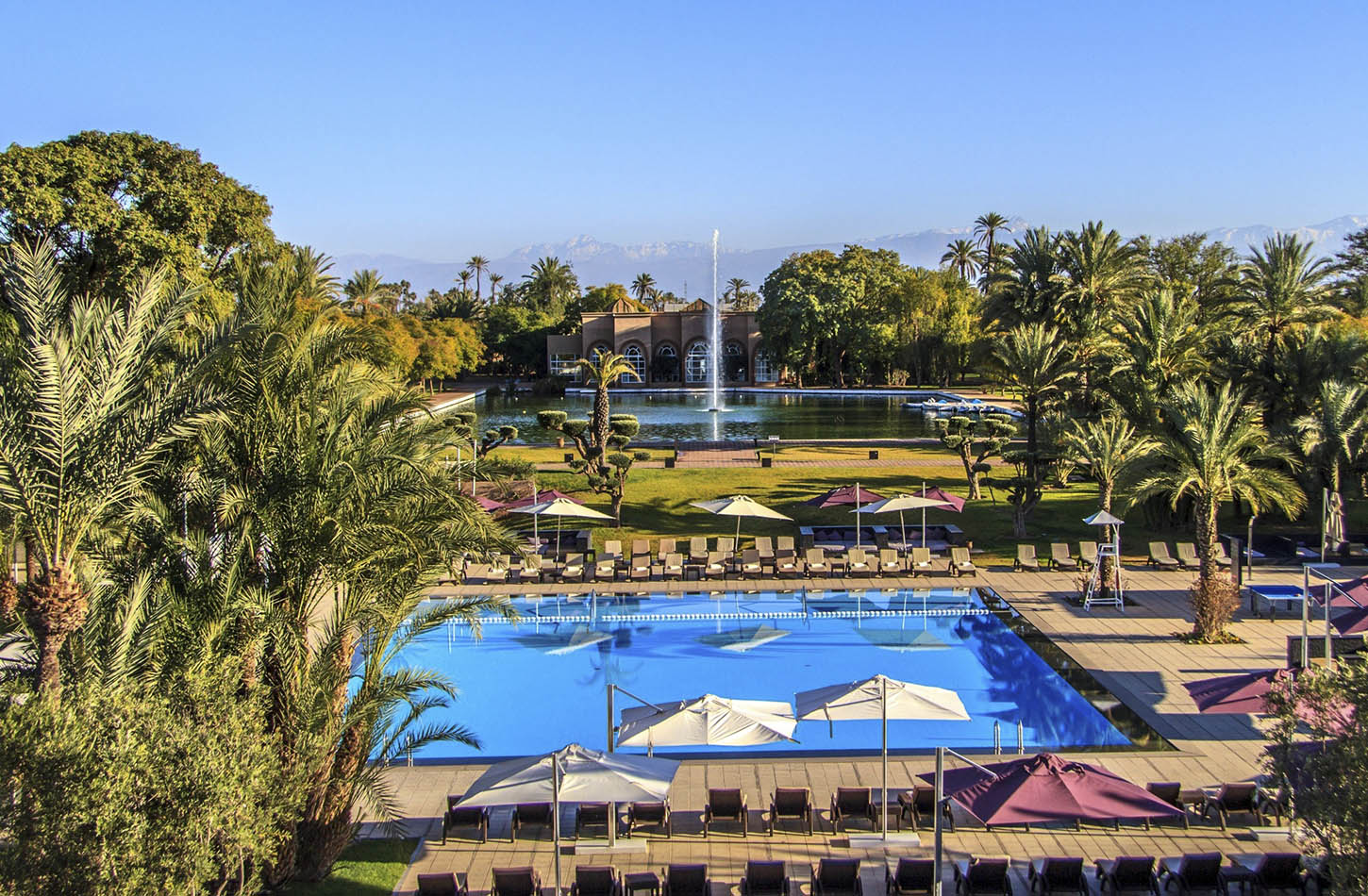Located in the southern part of the Medina of Marrakesh, in the old Jewish quarter of the city, the Bahia Palace was built with the claim to be one of the most fascinating architectural works in Morocco. It’s a palatial complex, with spectacular gardens covering 8,000 square metres, built in the late 19th century in the Moroccan style. With a total of 160 rooms overlooking its many courtyards and gardens, the Bahia Palace is one of the most visited monuments in Morocco.
History and context of the Bahia Palace
The person responsible for the construction of the Bahia Palace in Marrakesh, “the red city”, was the grand vizier of Sultan Abdelaziz, Ahmed Ben Moussa, also known as Bou Ahmed or Ba Ahmed. Legend has it that he was a black slave who had risen to the top of the social ladder, although other sources claim that he is of good lineage. What no one doubts is that he was an extremely cruel man who ruled with a dictatorial grip in Morocco. The fact is that this man designed this palace for his personal use in a former residence owned by his father and spared no expense.
It took him six years to complete it after calling on the best craftsmen in Morocco, they say as many as 1,000. Its name means “the brilliant” or “the beautiful”, a nickname he apparently used to pay homage to his favourite wife, whom he referred to in that way.
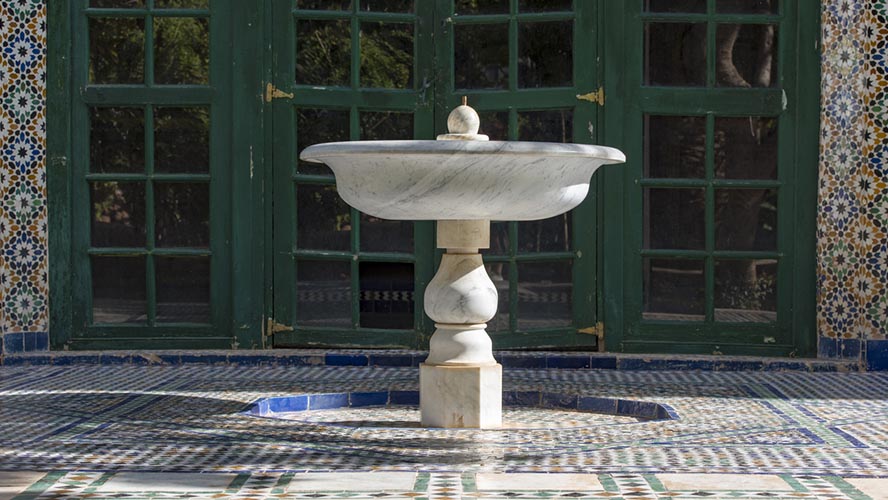
The Moroccan architect Muhammad al-Mekki undertook the work in 1894, and it wasn’t until 1900 that the Bahia Palace was inaugurated and presented as a large, maze-like space with a series of halls and courtyards. They weren’t all identical, but they did add to the architectural beauty of the ensemble.
Today, all the rooms of the Bahia Palace are empty because when the vizier died in 1900, the lavish building was stripped of its contents, even by his wives, on the orders of the sultan, who had the belongings moved to his own palace. All the furniture and rugs of the Bahia Palace disappeared and his family was forced to quickly flee Marrakesh. All that remained intact were the impressively decorated ceilings, the mosaics on the walls, the marble bathrooms, the incredible decoration of the arches, and the wonderful beauty of the polychrome coffered ceilings.
Shortly afterwards, the Bahia Palace was chosen by the French to house Marshal Lyautey’s offices during the French Protectorate in Morocco.
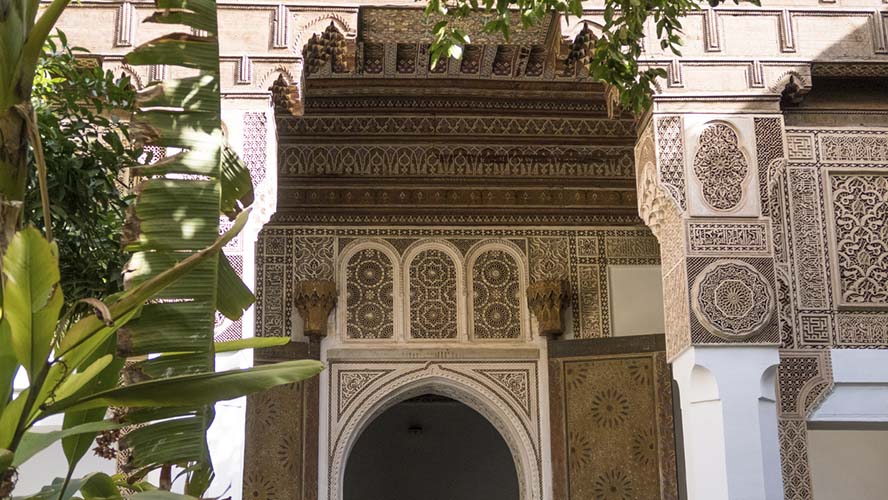
Style and architecture of the Bahia Palace
The striking architecture of the entrance to the Bahia Palace in Marrakesh doesn’t come as a surprise. What you see from the outside is a fence and a gate leading through a landscaped path to the palace. When you arrive, you’ll discover an architectural ensemble distributed over a ground floor, around which houses and courtyards have been arranged, providing it with impressive spaciousness and beauty. Some say that the reason all the rooms were arranged on the ground floor was because of the vizier’s obesity, which prevented him from climbing stairs due to his limited mobility.
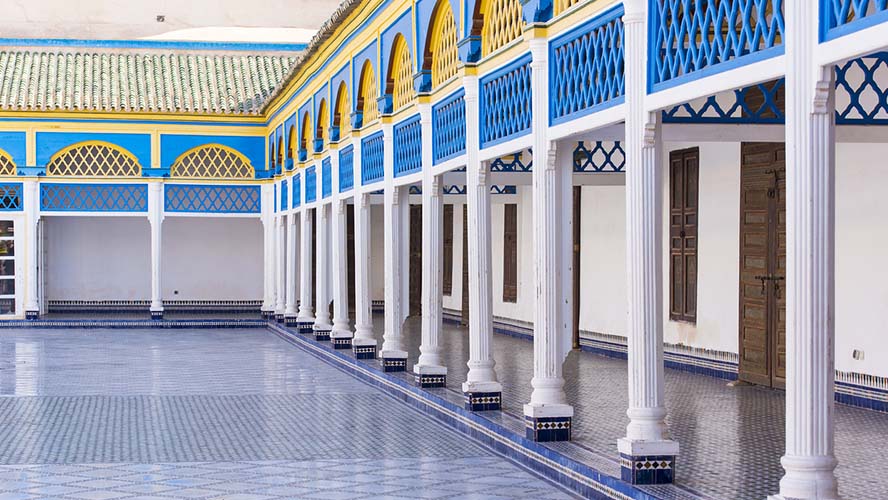
One of the most spectacular parts of the Bahia Palace in Marrakesh is the great Courtyard of Honour. It’s a large area measuring 50 metres by 30 metres, covered with Italian marble and Moroccan mosaics and surrounded by a gallery of 52 wooden columns leading to the harem of the grand vizier’s four wives and the rooms for his 24 concubines and their children. This spectacular courtyard has a beautiful central pond and three fountains. This courtyard also overlooks the Hall of Honour, measuring 20 m by 8 m, which was used for official receptions.
Another of the Palace’s most striking rooms is the Council Chamber, with its porcelain-lined walls, finely painted wooden windows, and polychrome cedar-wood ceiling. There’s also a mosque, a Koranic school, stables, an orchard irrigated by a central basin, as well as a dreamlike garden full of jasmine, orange trees, cypresses, olive trees, and fountains.
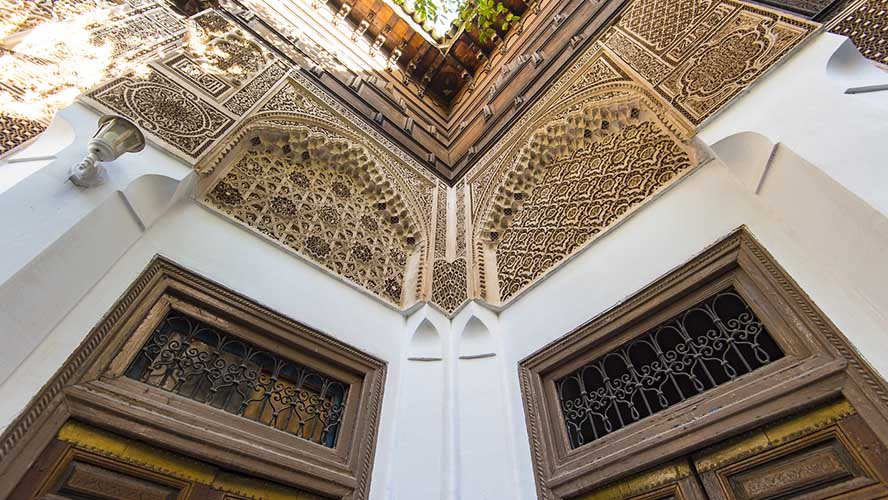
At present, only a third of the rooms of the Bahia Palace are open to visitors, just enough to allow them to enjoy the finest expression of Moroccan architecture, which is halfway between Arab and Andalusian. The palace’s private area is owned by the royal family and is used as a residence for foreign dignitaries arriving in Marrakesh. Another part of the palace houses facilities of the Moroccan Ministry of Culture.
The Bahia Palace also hosts art exhibitions, such as the Marrakesh Biennale, and music concerts.
Nearby are the Jewish Cemetery, the Salat al Azama Synagogue, the El Badi Palace, the Mosque of the Golden Apples, the Saadid Tombs, and Bab Agnaou.




































































